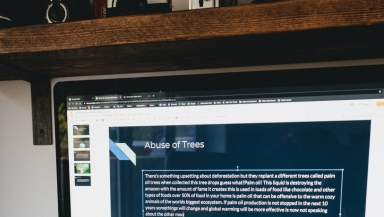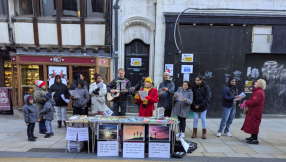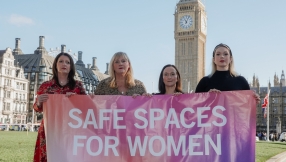
After the easing of the first lockdown in 2020 – when one was finally allowed to meet another person, outside of your household, for a walk – I met up with a clergy friend from a 'pioneering' church, that was newly established in a nearby large town. His church was a very snazzy set-up: well-financed, a trendy new building, hi-tech, lots of young leaders.
Anyway, we got to talking about children and youth church and how we were coping with the restrictions. In my church I am the volunteer leader who oversees this area and I had been keeping a close eye on how things were going with my teams. I told my friend that, while lockdown had been stressful, we were pleasantly surprised with how many children and young people were attending our online meetings. While we were newcomers to Zoom – and while it sometimes could feel a bit clunky – weekly attendance of young people was very high. In fact, it was better than when our groups normally met in-person before the pandemic!
His reply surprised me. His church team had created some really impressive online resources: well-produced, beautifully crafted, all-singing-all-dancing. And the result? Numbers of young people logging-on had been extremely disappointing. What was going on?
We decided that the answer was very simple. Cut off from personal contact with their friends and leaders, a bunch of Zoom screens – even with those two-second delays on speech – had greater appeal (and offered more connection, even solace) than immaculate presentations. It was personal contact that they needed. It was then that something of the enormity of what had landed on our children and young people hit home in a new way.
The mixed blessings of home-working
Many people have commented on the personal sense of 'liberation' that they have felt at not having to go into the office and, instead, working from home. The freedom from commuting and the economic savings gained from no longer having to maintain the workspace in the office, or the learning space in the school or college, has been extolled. And clearly, for many people, there have been positive aspects to the 'new normal' as it impacts on work.
However, there is another side to this 'new normal' situation, as many people will testify. Isolation, overcrowding, lack of a workspace, competition for devices and broadband has been the experience of many people. And for those joining a team, or new members of a team, the experience of 'home-working' has often been anything but 'liberating'! As one wise friend commented to me: "In home-working, people cash in the social capital that they have built up and invested over the preceding years."
But for those who have not built up that 'social capital' all they get is isolation, loneliness and a sense of fragmentation. Similarly, for those who rely on personal interactions, the experience has been difficult to manage.
Nobody has experienced this more than our children and young people. This started from the most basic level. It was often commented that young people have lots of devices capable of accessing the internet and that they were ideally placed to respond to the rush to online working. Of course, what this failed to recognise was the fact that most of these 'devices capable of accessing the internet' are mobile phones. Ever tried writing an essay or doing a presentation on a mobile phone?
Many families and young people don't have a laptop. Or the family laptop was in high demand, as parent(s) were also experiencing the 'liberating joys' of home-working. For the poorest families the situation was crippling and a significant number of students rarely, or never, logged on. They would have liked to – but they simply could not do so. The pandemic targeted the education of the poor and the marginalised, as much as it did the health of the old, the poor, and those with underlying health conditions.
The same lack of online attendance was, unsurprisingly, also seen among those students whose commitment to learning had always been a matter of concern. Those who were already behind fell even further back during the lockdowns.
Government initiatives were way behind the curve of need. I knew of one school who – giving up on the promise of laptops from the government – dusted down their store of battered ones and took them out to students in need. These were the laptops with the broken keys, the unresponsive touch pads, and the snail-slow internet access that had driven teachers mad for years. But now they became the only way that students could stay in touch.
Given the crisis that hit our communities, it is frankly extraordinary how well schools have coped and how teachers and students have overcome difficulties in order to make learning happen. But this has come at a high price.
The impact on mental health
When the cost of the pandemic is calculated, the negative impact on mental health must be underlined on the grim balance sheet. Few have experienced this more than our children and young people. And it has been worse than disrupted lessons, missed time with mates, an abandoned prom, no extracurricular activities. Significant mental illness has also been a product of Covid-19.
Older English translations of Matthew 19:14 conveyed the words of Jesus as "Suffer little children," using sixteenth- and seventeenth-century English to communicate the original Greek. The meaning, of course, as expressed in modern English is: "Let the children come to me." However, the word 'suffer' in its modern sense has been the experience of many children over the recent past.
In August 2021, The Lancet carried a report on the impact of the pandemic on the mental health of young people. It reported on the findings of the 'Co-SPACE study.' This is a UK-based survey of parents and carers of children and adolescents aged 4–16 years, and adolescents aged 11–16 years. It started early in the first lockdown of 2020 and has collected data from over 8,700 families. It will come as little surprise to discover that incidence of behavioural, emotional and attentional difficulties went up significantly during the lockdowns.
It was bad for all children and young people, but seemed to be worse among pre-adolescent children (aged 4–10 years). The most likely reason being "isolation from peers and family stress." The same pattern affected parents of these children, as they juggled home- schooling with work demands and domestic commitments. Of these parents, over 60% reported that "they did not feel able to meet the needs of both their child and their work."
This damage will be hard to repair. Overall, the stress and disruption to schooling – alongside isolation from peers – has had the greatest impact on students with special educational needs, neurodevelopmental disorders and those from low income families. What is especially worrying is that this group continues to report these problems, despite the easing of restrictions and the consequent improvement in mental health experienced by the wider group of those responding to the study. As schools move through the current autumn term, the damage caused by the past 18 months continues to hamper the recovery of the most vulnerable.
A UK government report, as far back as the autumn of 2020, found evidence that a number of young people "with pre-existing mental health needs have found the return to school difficult." This had led to self-harm or suicidal thoughts. According to a UN report issued at the same time, "More than 40% of people between the ages of 13 and 25 in the UK reported that their mental health was 'much worse' due to the pandemic." Many of these young people will still be struggling now, after two more lockdowns.
The return to 'normal' is not proving easy for those who faced mental health challenges in the past. And the experiences of the pandemic have triggered problems in many who had not experienced them before. Consequently, the Children's Society has estimated that one in six children in the UK aged 5–16 are likely to have a mental health problem; and that over the last three years, the likelihood of a young person experiencing a mental health problem has increased by 50%. At present, something like five children in an average class of thirty are likely to have mental health issues.
Anecdotal evidence supports this conclusion of acute mental health problems in our communities. A friend told me of a neighbour who was struggling to support a child at home who was suffering from severe anorexia, because there was no room at a nearby specialist unit. Eventually, the child had to be admitted to a general hospital. Only last week, a different friend remarked that the local hospital at which they work had cancelled some operations that day because children with serious mental health issues were in beds in the hospital - because of lack of space at specialist units. Ward staff were doing their best to care for these children.
The Children's Society has estimated that 75% of young people experiencing mental health problems are not getting the help they need and that 34% of those referred to NHS services are not accepted into treatment. Clearly, there is a crisis in available provision for such vulnerable children and young people.
What can we do?
Pray for children and young people and their families; especially for those experiencing mental distress as a result of the pandemic.
Put pressure on MPs and government to greatly expand the provision of mental health services and specialist units for our children. Put your vote behind this in future elections.
Cut young people a bit of slack. For many of them it has felt like one and a half 'lost years.' When we recall the total damage and loss caused by Covid-19, let us never forget the huge cost in terms of lost opportunities, stress and mental health to our young people. They often get a lot of stick from older people, but young people have sacrificed over a year of their lives for the good of others. We should never forget that. Maybe say thank you to them, for the price they have paid?
Martyn Whittock is an evangelical and a Licensed Lay Minister in the Church of England. As an historian and author, or co-author, of fifty-two books, his work covers a wide range of historical and theological themes. In addition, as a commentator and columnist, he has written for a number of print and online news platforms; has been interviewed on radio shows exploring the interaction of faith and politics; and appeared on Sky News discussing political events in the USA. His most recent books include: Trump and the Puritans (2020), The Secret History of Soviet Russia's Police State (2020), Daughters of Eve (2021) and Jesus the Unauthorized Biography (2021). For thirty-five years he taught History and RS in a number of comprehensive schools in England and was, variously, Head of History, Director of Humanities, and responsible for Spiritual, Moral, Social and Cultural (SMSC) education.













